Samosa Recipe – How to Make Perfect Samosa
Crispy, flaky Samosa is the perfect appetizer for any celebration. Filled with a spicy potato filling, this Samosa is also vegan!
This post may contain affiliate links. Please read our disclosure policy.
Make the perfect flaky and crispy Samosa at home!
All tips and tricks to make the perfect samosa each time! These are filled with a spicy potato filling and are also vegan.
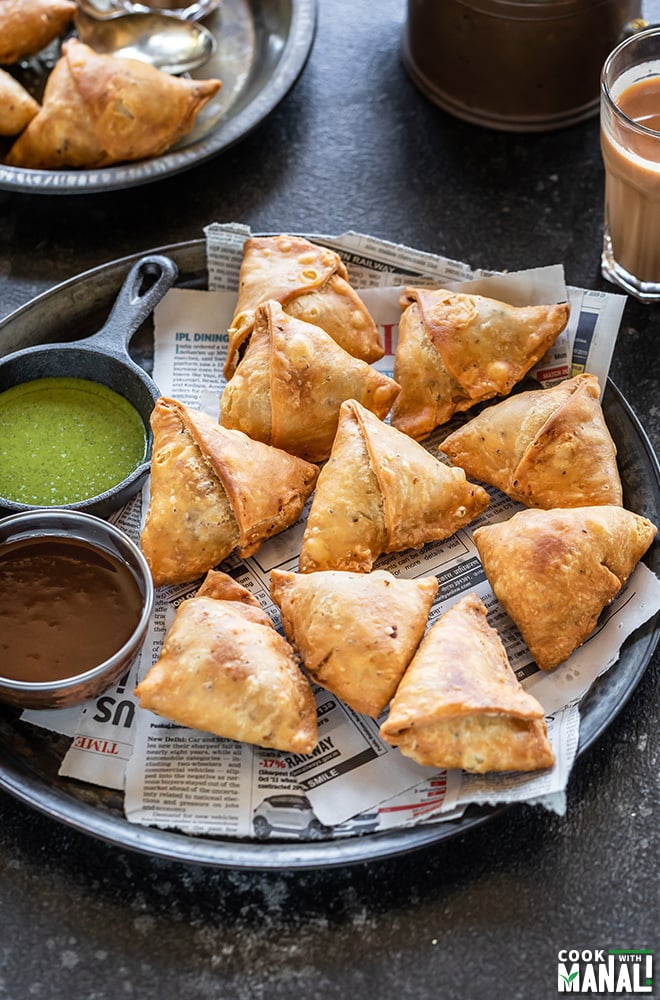
Samosa, does it need any introduction? I don’t think so!
The triangular shaped flaky pastry filled with spicy potato, chicken or lamb filling is a popular snack not only in India but in several countries of the world.
Because samosa is so so common in India (you literally get samosa and chai at every other street corner), I always considered it to be a quintessential Indian delicacy.
But only later I read that it has its origin in Middle East and it was introduced to India during the Delhi Sultanate rule.
It was later adapted as a vegetarian snack with spicy potato filling in India (which is what is most popular in northern India).
Anyway whatever the origin was, I can confidently say that samosa, especially Aloo Samosa is the most popular snack back home.
It’s there in every party, office meeting, chai meet-ups, you name it and samosa will be there!
I was very particular about the type of samosa that I liked and I liked it only from one shop in my hometown.
Even now when I go home, I make sure to indulge in those samosas from my favorite shop.
For me a good samosa should be crispy and most importantly it should not be oily at all.
Here in the US I haven’t had much luck finding good samosas so now I make them at home.
And dare I say, they turn out as good as the one from my favorite shop in India! 🙂
Making samosa is a multi-step process so I am not going to say it’s super quick and easy.
But the joy of biting into that homemade flaky crispy crust filled with spicy potatoes makes it all worth it.
This is one of those treats that you should make for special occasions or over a weekend when you want to have some fun in the kitchen.
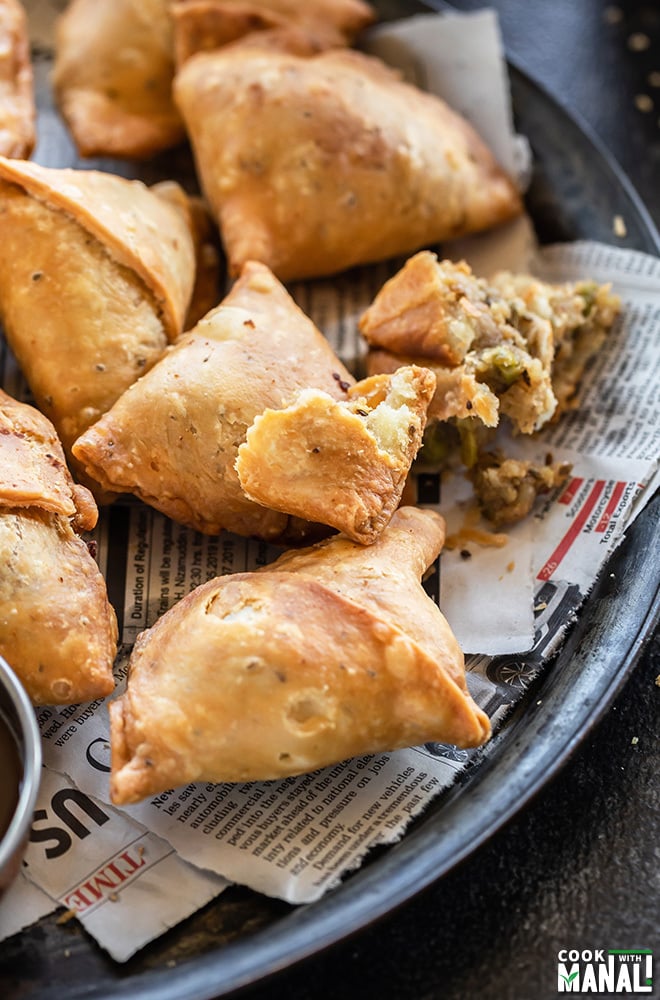
This Homemade Samosa
✓ is crispy and flaky
✓ tastes just like the samosa from your favorite shop
✓ is filled with a flavorful potato and peas filling
✓ tastes great with a cup of chai!
✓ is also vegan
I like adding peas to my samosa, if you don’t like it you may skip it.
Some people also add nuts like cashews and raisins to the filling to make it more rich. Again, a personal choice!
Even though the process of making samosa is quite straight forward, there are a number of things that you should keep in mind while making these at home.
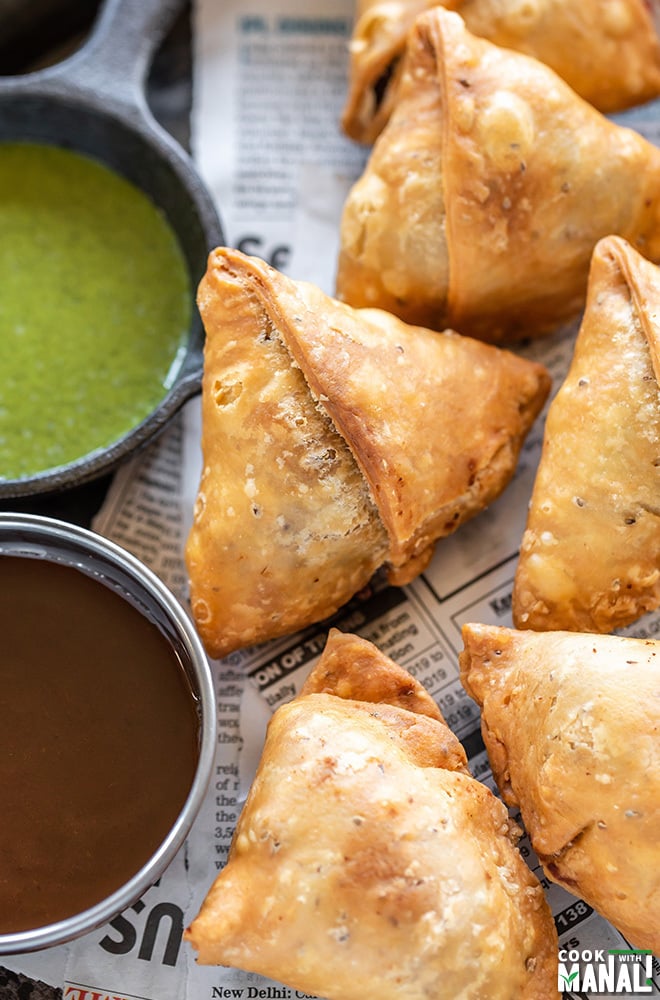
Tips to Make The Perfect Samosa
So here’s what I have learned over the years and I am excited to share all my tips with you guys to make the perfect samosa at home!
Mixing the oil with flour is important– rub it for good 3 to 4 minutes, do so by rubbing between your hands until the oil is well incorporated with the flour.
Don’t overwork the dough– you only need to bring the dough together. If you overwork it, the samosa will be hard.
Dough should be stiff– soft dough will not give crispy samosa.
Let the dough rest for around 40 minutes– always remember to let the dough rest for at least 30 to 40 minutes before you start making the samosa.
Roll the dough evenly and roll it thin– try to roll the dough thin and evenly. If the dough is rolled thick, it will take a long time for the dough to get cooked. Also we all like thin crispy edges of the samosa, agree?
But don’t roll it super thin too, else the dough will tear apart when you fill it.
Do not use any flour while rolling the samosa, you can apply little oil on your rolling pin.
Fry the samosa on low heat – the most important thing- always fry the samosa on low heat (not high, not medium), that way they will turn crisp.
Once they have become light brown in color (after 10 minutes or so), then you can increase the heat and fry on medium heat.
Also when you fry on low heat, they won’t get any blisters which they do when you drop them in hot oil.
Why is My Samosa Not Crispy?
This happens when you fry the samosa in hot oil. You need to fry the samosa on low heat always.
Also, your dough needs to be stiff. Soft dough will also result in a not-so-crispy samosa.
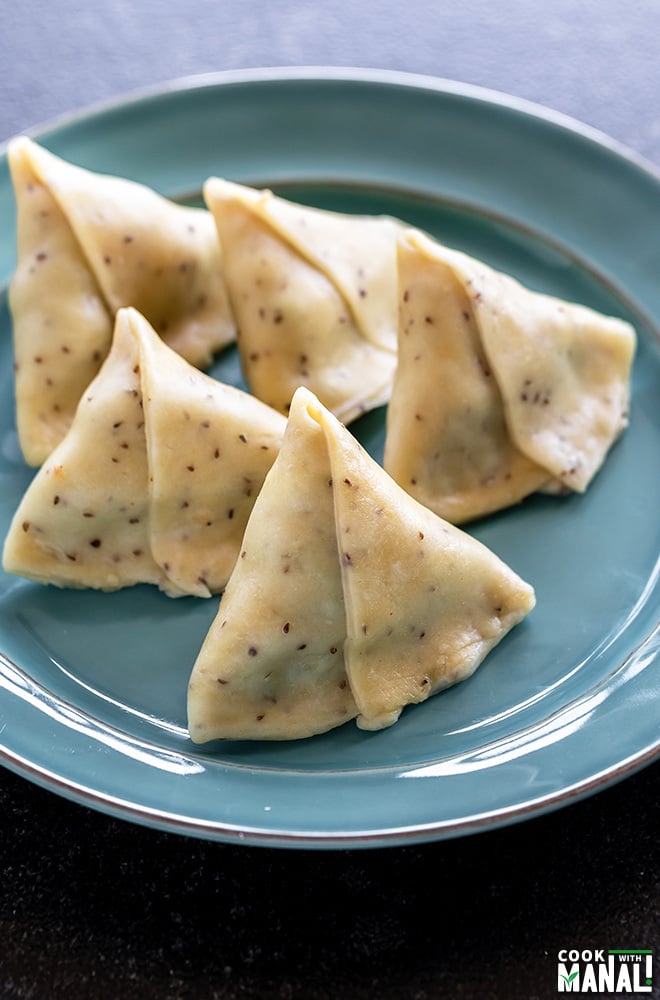
How to Store and Re-heat Leftover Samosa
I usually place them in an airtight container and refrigerate.
To warm them up, I pre-heat my oven to 350 F degrees and them place the samosa in the oven for 5 to 10 minutes until nicely warm.
Can I Freeze The Samosa?
Yes! Once the samosa is filled and shaped, placed them on a baking sheet lined with parchment paper.
Place the baking sheet into the freezer for couple of hours until samosas are firm.
Then transfer to a freezer bag and freeze.
Can I Bake The Samosa?
Yes! Brush the samosas with oil and then bake at 350 F degrees for 30 to 35 minutes or until browned.
Leftover Samosa Ideas
If you have leftover samosas (what!!), you can use them in different ways.
Like make, Samosa Chaat where you pair the samosas with chole and chutneys.
You can also make Samosa Sandwich, apply chutneys on bread and place a samosa in between. You can even put some sev on top and enjoy.
Can I Use Whole Wheat Flour?
If you want to use whole wheat flour in this recipe, I would recommend replacing half of the flour with whole wheat.
So, use 1 cup all purpose flour and 1 cup whole wheat.
Method
Make the samosa dough
1- Start by making the samosa dough. To a large bowl, add flour, ajwain, salt and mix well.
2- Add the oil and then start mixing with your fingers.
3- Rub the flour with the oil until the oil is well incorporated in all of the flour. Do this for 3 to 4 minutes, you don’t want to rush this step.
4- Once incorporated, the mixture resembles crumbs.
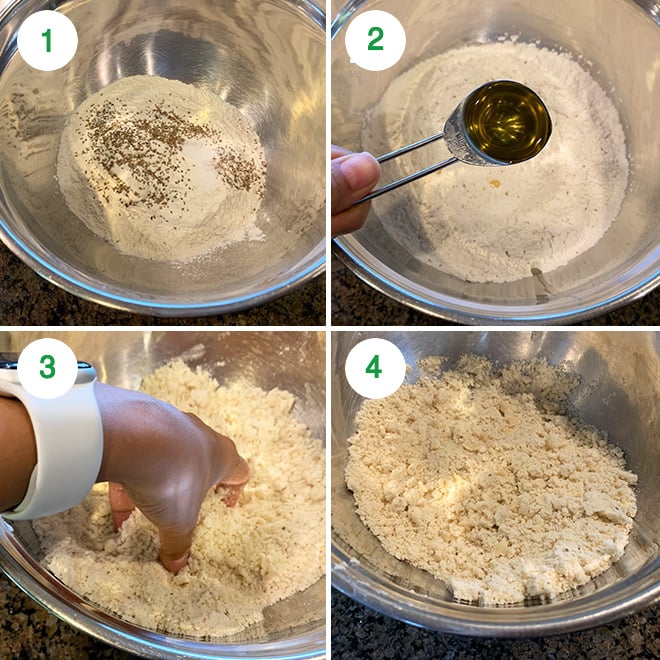
5- Press some flour between your palm- it should form a shape (& not crumble) – means oil is enough and well incorporated.
6- Now, start adding water, little by little and mix to form a stiff dough.
7- Don’t overwork the dough and don’t knead a soft dough. It should just come together and form a stiff dough. I used around 6 tablespoons of water here.
8- Cover the dough with a moist cloth and let it rest for 40 minutes. I usually soak a paper towel in water and then squeeze out all the water and then cover my dough with that.
While the dough is resting, start working on the filling.
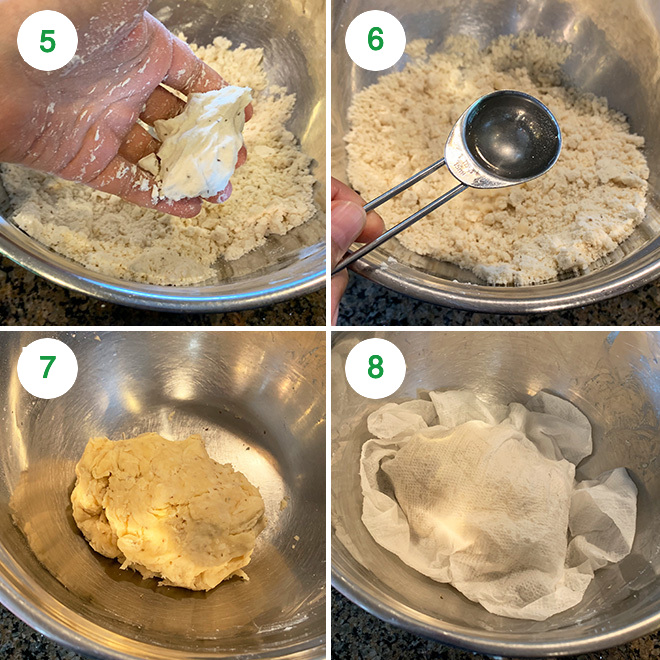
Make the filling
9- Boil potatoes until done.
8 to 9 whistles on high heat with natural pressure release if using stove-top pressure cooker or if using Instant Pot, high pressure 12 minutes with natural pressure release on a trivet with 1 cup water in the bottom of the pot.
10- Peel the skin and them mash the potatoes. Set aside.
11- Heat 2 tablespoons of oil in a pan on medium heat. Once the oil is hot, add the cumin seeds, fennel seeds and crushed coriander seeds.
12- Let the seeds sizzle for few seconds and then add the chopped ginger, green chili and hing. Cook for 1 minute.
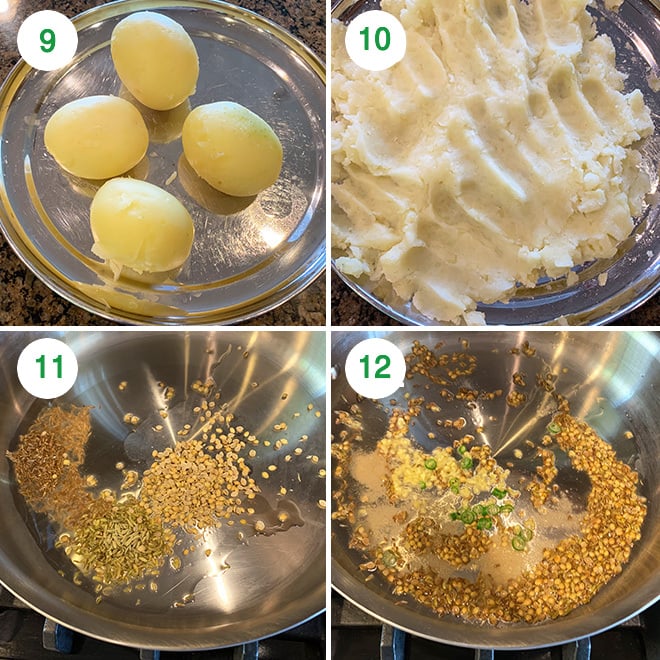
13- Add the boiled & mashed potatoes and green peas to the pan.
14- Mix everything together. I use my potato masher to combine the spices and seasonings well with the potatoes and peas.
15- Add the coriander powder, garam masala, amchur, red chili powder and salt.
16- Mix to combine. Once it’s all well incorporated, remove pan from heat and let the filling cool down a bit.
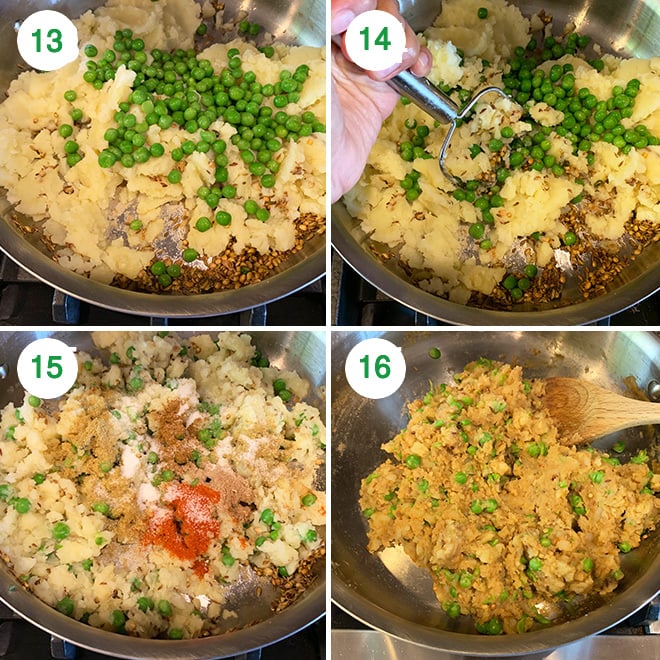
Shape and fry the samosa
17- Once the dough has rested, give it a quick knead. Then divide the dough into 7 equal parts of around 58-60 grams each.
Start working on a piece of dough, keep the remaining dough balls covered at all times with a moist cloth else the dough will dry out.
18- Roll one dough ball into a circle-oval kind of shape, around 6-7 inches in diameter and then cut it into two parts.
19- Take one part and apply water on the straight edge/side. I usually mix some flour with water so that it forms a nice glue.
20- Now bring the two ends of the straight edge together and pinch them to form a cone. See picture (#20) for a better idea.
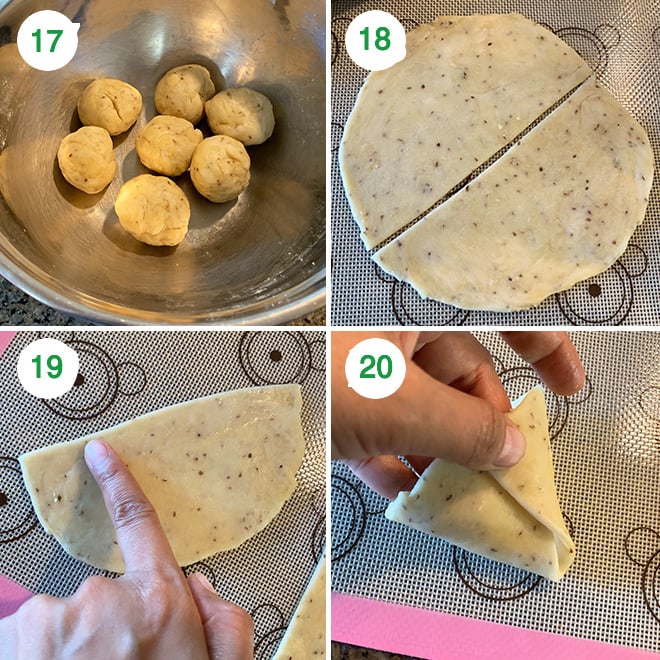
21- Pinch the pointed ends to make it a perfect cone shape.
22- Fill the samosa with the potato filling, around 1 to 2 tablespoons. Don’t overfill the samosa.
23- Now again apply water all around the circumference of the cone as you have to seal it. Pinch the opposite side (side opposite to where you pinched to form the cone) to form a plate (see picture #23).
24- Now pinch the edges and seal the samosa.
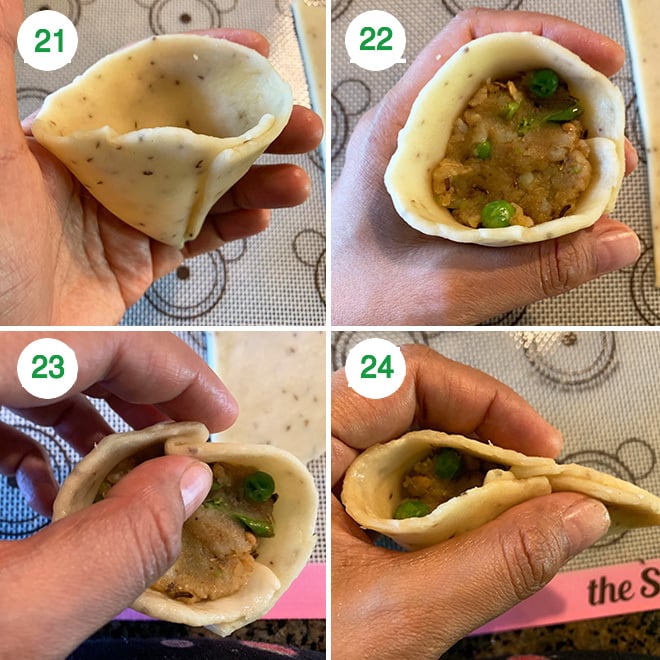
25- Your samosa is now ready. Repeat with remaining dough. Always remember to keep the filled samosa covered with moist cloth while roll and fill the others.
26- Now heat oil in a kadai on low heat. To check if oil is ready, drop a small piece of dough into the oil. It should take few seconds to come up to the surface. That means the oil is ready.
Drop the shaped samosas into the oil.
27- Fry on low heat. After around 10-12 minutes, the samosa will become firm and light brown in color.
28- At this point, increase the heat to medium and fry until it gets nicely browned.
Don’t overcrowd the kadai/wok, fry 4-5 samosas at a time. And each batch will take around 20 minutes since we fry on low heat so be patient.
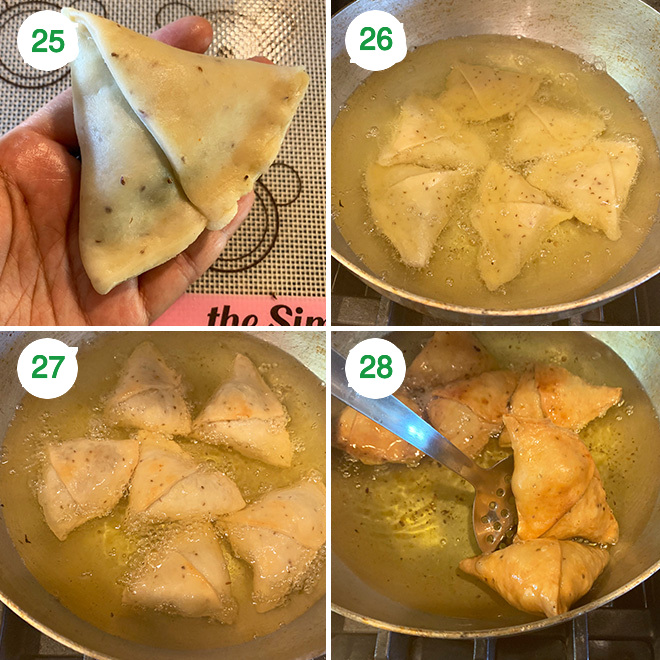
Once you finish frying one batch, lower the heat again to low and wait until the temperature of the oil drops and then add the second batch.
If you fry samosa on high heat, they will not get crispy and the dough will remain uncooked. The samosa will also have bubbles on the crust if you oil temperature is hot while frying the samosa.
Enjoy hot samosas with cilantro chutney or sweet tamarind chutney! Yum!
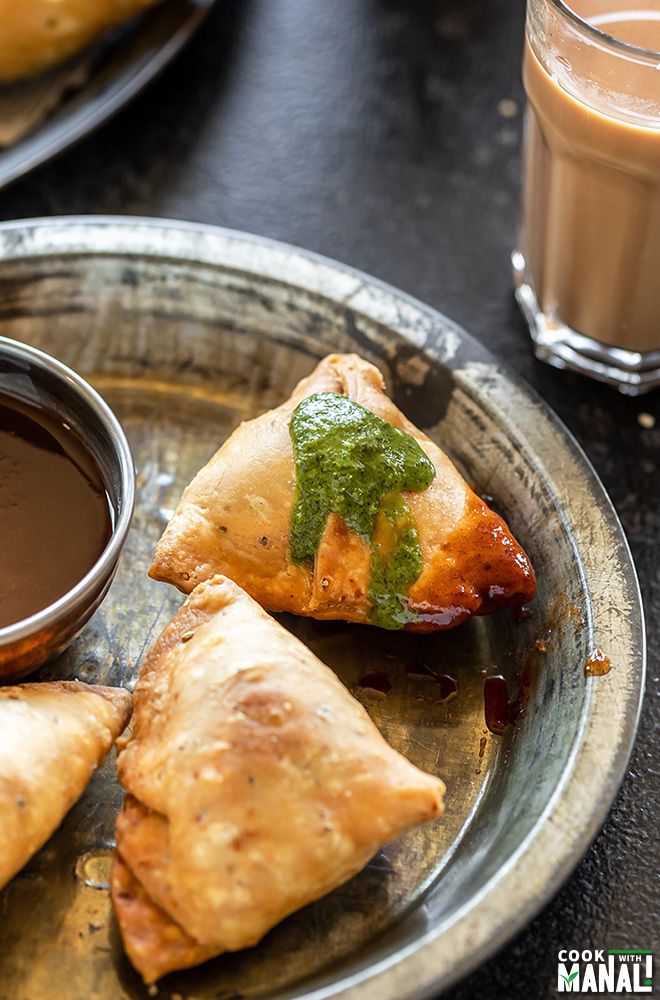
If you’ve tried this Samosa Recipe then don’t forget to rate the recipe! You can also follow me on Facebook and Instagram to see what’s latest in my kitchen!
Samosa Recipe
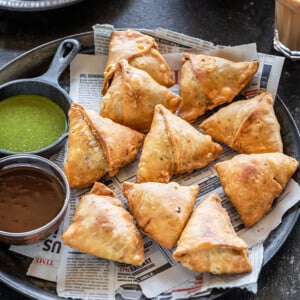
Ingredients
Samosa Dough
- 2 cups all purpose flour (maida) 260 grams
- 1 teaspoon ajwain carom seeds
- 1/4 teaspoon salt
- 4 tablespoons + 1 teaspoon oil 60 ml + 5 ml
- water to knead the dough, around 6 tablespoons
Samosa Filling
- 3-4 medium potatoes 500-550 grams
- 2 tablespoons oil
- 1 teaspoon cumin seeds
- 1 teaspoon fennel seeds
- 2 teaspoons crushed coriander seeds
- 1 teaspoon finely chopped ginger
- 1 green chili chopped
- 1/4 teaspoon hing asafoetida
- 1/2 cup +2 tablespoons green peas I used frozen green peas which I soaked in warm water for 10-15 minutes before using
- 1 teaspoon coriander powder
- 1/2 teaspoon garam masala
- 1/2 teaspoon amchur dried mango powder
- 1/4 teaspoon red chili powder or add more to taste
- 3/4 teaspoon salt or to taste
oil, for deep frying
Instructions
Make Samosa Dough
- Start by making the samosa dough. To a large bowl, add flour, ajwain (carom seeds), salt and mix well.
- Add the oil and then start mixing with your fingers. Rub the flour with the oil until the oil is well incorporated in all of the flour. Do this for 3 to 4 minutes, you don't want to rush this step. Once incorporated, the mixture resembles crumbs.
- Press some flour between your palm- it should form a shape (& not crumble) – means oil is enough and well incorporated.
- Now, start adding water, little by little and mix to form a stiff dough. Don't overwork the dough and don't knead a soft dough. It should just come together and form a stiff dough. I used around 6 tablespoons of water here.
- Cover the dough with a moist cloth and let it rest for 40 minutes. I usually soak a paper towel in water and then squeeze out all the water and then cover my dough with that. While the dough is resting, start working on the filling.
Make the potato filling
- Boil potatoes until done. 8 to 9 whistles on high heat with natural pressure release if using stove-top pressure cooker or if using Instant Pot, high pressure 12 minutes with natural pressure release on a trivet with 1 cup water in the bottom of the pot.
- Peel the skin and them mash the potatoes. Set aside. Heat 2 tablespoons of oil in a pan on medium heat. Once the oil is hot, add the cumin seeds, fennel seeds and crushed coriander seeds.Let the seeds sizzle for few seconds and then add the chopped ginger, green chili and hing. Cook for 1 minute.
- Add the boiled & mashed potatoes and green peas to the pan. Mix everything together. I use my potato masher to combine the spices and seasonings well with the potatoes and peas.
- Add the coriander powder, garam masala, amchur, red chili powder and salt. Mix to combine. Once it's all well incorporated, remove pan from heat and let the filling cool down a bit.
Shape & fry the Samosa
- Once the dough has rested, give it a quick knead. Then divide the dough into 7 equal parts of around 58-60 grams each.Start working on a piece of dough, keep the remaining dough balls covered at all times with a moist cloth else the dough will dry out.
- Roll one dough ball into a circle-oval kind of shape, around 6-7 inches in diameter and then cut it into two parts.
- Take one part and apply water on the straight edge/side. I usually mix some flour with water so that it forms a nice glue.Now bring the two ends of the straight edge together and pinch them to form a cone. See step-by-step pictures above for a better idea. Pinch the pointed ends to make it a perfect cone shape.
- Fill the samosa with the potato filling, around 1 to 2 tablespoons. Don't overfill the samosa.
- Now again apply water all around the circumference of the cone as you have to seal it. Pinch the opposite side (side opposite to where you pinched to form the cone) to form a plate (see step-by-step pictures above). Then pinch the edges and seal the samosa.
- Your samosa is now ready. Repeat the same process with remaining dough. Always remember to keep the filled samosa covered with a moist cloth while roll and fill the others. You will get 14 samosas.
- Now heat oil in a kadai on low heat. To check if oil is ready, drop a small piece of dough into the oil. It should take few seconds to come up to the surface. That means the oil is ready.Drop the shaped samosas into the oil.
- Fry on low heat. After around 10-12 minutes, the samosa will become firm and light brown in color. At this point, increase the heat to medium and fry until it gets nicely browned.Don't overcrowd the kadai/wok, fry 4-5 samosas at a time. And each batch will take around 20 minutes since we fry on low heat so be patient.
- Once you finish frying one batch, lower the heat again to low and wait until the temperature of the oil drops and then add the second batch.Enjoy hot samosas with cilantro chutney or sweet tamarind chutney!
Notes
- Most important thing to remember is to not the fry the samosa on high heat, they will not get crispy if you do so and the dough will remain uncooked. The samosa will also have bubbles on the crust if you oil temperature is hot while frying the samosa.
- I have used green peas in my samosa filling. If you are not a fan, simply skip.
- This recipes makes 14 medium sized samosa. You can make more or less depending on how you like.
Nutrition
Nutrition information is automatically calculated, so should only be used as an approximation.

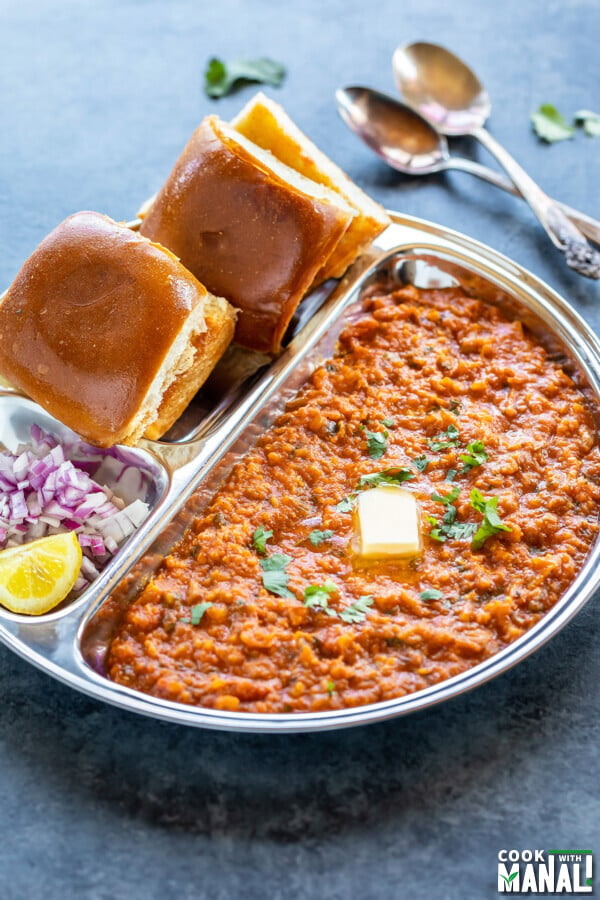
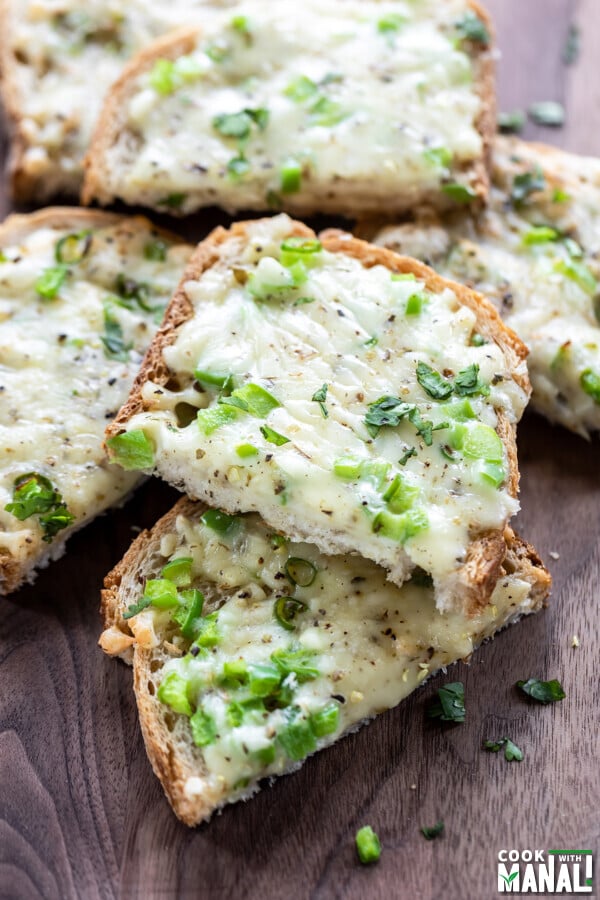
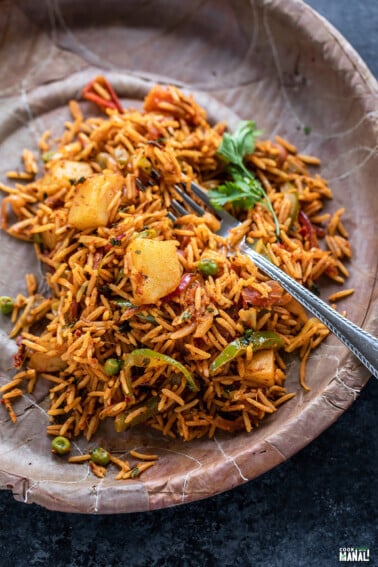
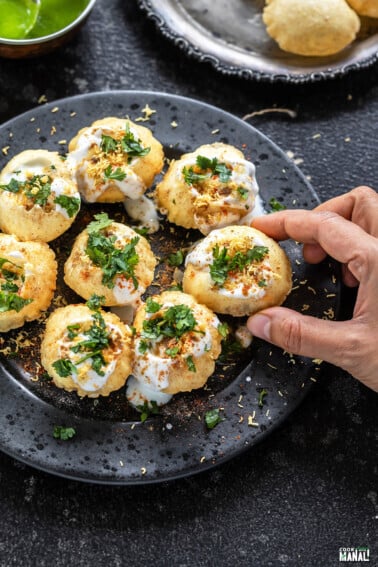









When you refer to low oil tempature and high temerater. what are these temperatures.
around 320 F
its highly detailed pray for me as am trying it out
haha hope it turned out well!